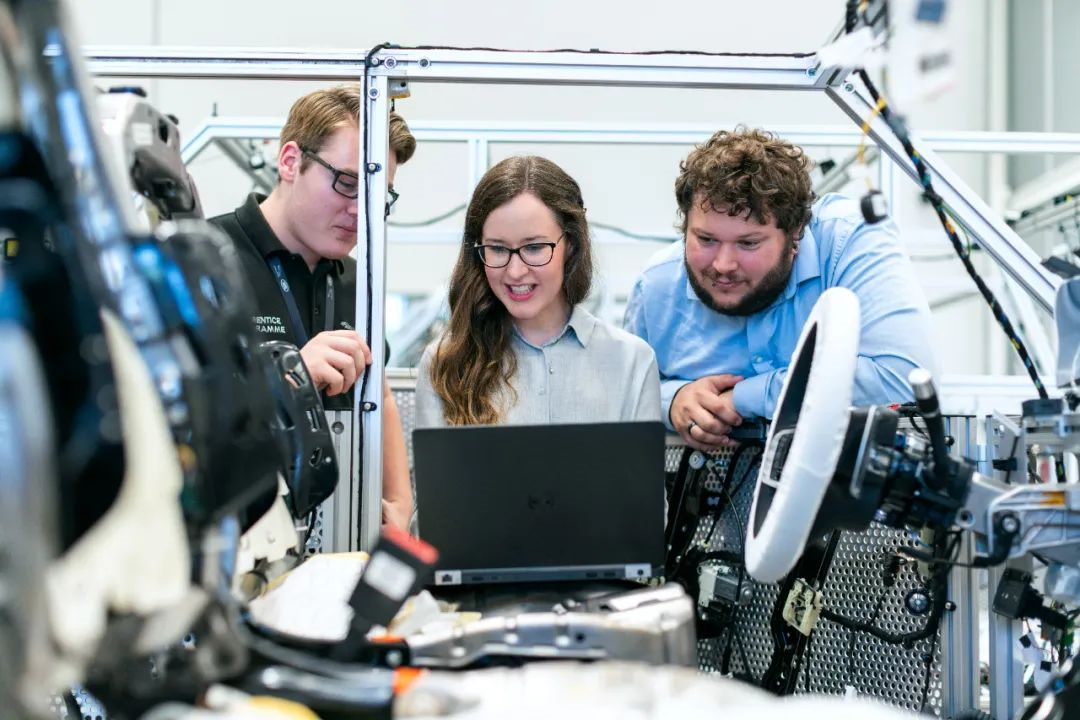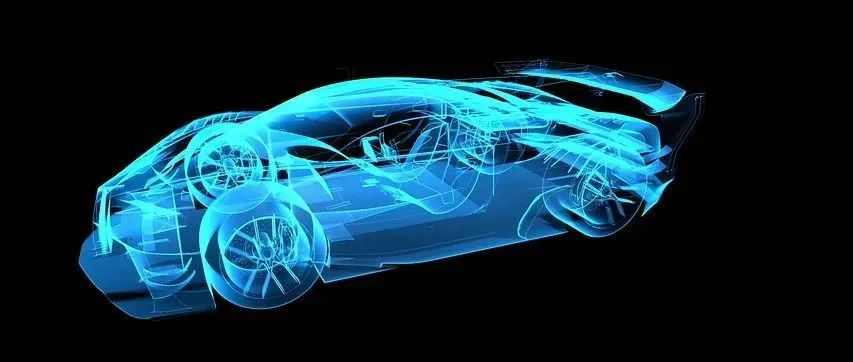Article | Wu Xianzhi
Editor | Wang Pan
“Chassis is the final puzzle of intelligence.”
Recently, Duan Kang (pseudonym), the R&D manager of a state-owned Tier 2 shock absorber, told Photon Planet that out of the “big three” parts of cars (engine, transmission, and chassis), due to electrification, engines and transmissions are no longer a problem, while chassis remains an obstacle.
Another engineer, Lu Ping (pseudonym), predicted as early as last year that new forces in the automotive industry will definitely catch up by 2022, and the most important part is to solve various hardware deficiencies. “It involves considerations of safety, driving experience, and comfort.”
The industry has indeed evolved as predicted by insiders. It started with the discussion about the ability to choose optional air suspension with NEO NK-001. Regardless of the external evaluations, it must be admitted that air suspension truly improves filtering shock and noise and driving experiences, which change the terrible experiences of the new energy cars of “queasy driving and queasier riding.”
On June 15th, NIO released the new NT2.0 platform car model, ES7, which also involves many optimization approaches for suspension. For example, it is equipped with the self-developed ICC chassis domain controller, which adapts to different groups of drivers’ driving habits and levels by controlling the height of the car’s air springs, suspension damping, electronic parking, and other functions.
NK-001 and NIO ES7 stand out in the self-developed chassis, perhaps with different considerations. One thing that can be confirmed is that after electrification, both new and old forces did not transited directly as expected by Li Yanhong, but instead turned back to cover deficiencies in hardware.
New automakers from the inside to the bottom of the car
“The intelligentization of the cockpit is essential, but even a buggy infotainment system like BYD can achieve monthly sales of 100,000, fully explaining that the current market’s demand for intelligence is not strong.” An industry insider believed that with the deepening of electrification, the hardware deficiencies of the new forces are becoming more and more prominent.
It is not difficult to see that since 2020, both old and new forces mostly focus on the inside of the car, such as the interior, infotainment system, dazzling functions (such as the “headlight control” coalition), as well as the concepts continuously created by some car companies. However, no matter whether it is a gasoline car or an electric car, the basic functions of cars are still the core.
“As a rule, people generally do not get dizzy when driving a gasoline car, but they will get dizzy whether driving or riding in an electric car like riding a boat.” From the driver’s perspective, Duan Kang thinks that the current focus on electric cars is excessive marketing, neglecting driving safety and comfort. At the same time, he is also a speed reducer R&D manager. Since 2020, an increasing number of clients have signed order after order with his company.Different from the fields of in-vehicle systems, power system, sales, and services, where new players often shake up the BBA (referring to the dominant German luxury car manufacturers) and challenge the traditional car makers, there is little innovation and disruptive revolution in chassis technology. According to several engineers, there are few differences in the overall chassis design between electric and gasoline vehicles except that the former has more space for improvement due to less constraint from engine and transmission components.
“Due to the highly standardized production process, the chassis industry has not seen much change in many years, and the only difference may be that electric vehicle chassis has more space, allowing for greater potential for improvement,” a source noted. Excessive component configurations often lead to a very tight layout in conventional gasoline vehicle chassis whereas electric vehicle chassis usually come with more spacious layout to accommodate the battery packs.
Some details also indicate that there are certain gaps in technology experience and data accumulation between new carmakers and traditional car companies in terms of chassis technology and components.
Taking shock absorbers as an example, they usually consist of at least ten grey-box and black-box components. Grey-box components are developed jointly by suppliers and carmakers, whereas black-box components are developed solely by suppliers. Carmakers may have only partial data or no information at all, making the development process quite complicated as a result.
Generally, it may take around one year for carmakers and shock absorber suppliers to complete the entire process from development to trial production, road testing, and mass production. The first few months involve reviewing proposals and signing contracts, followed by a two-month period to match samples and confirm delivery schedule and quantity. After both parties reach an agreement, small-batch production begins to be carried out, followed by two rounds of road testing, with the second round being typically tens of thousands or up to 100,000 km. Mass production can only begin after the road testing phase ends.
However, many new carmakers lack the necessary experience and clear requirements during the development phase, making it difficult for suppliers to work efficiently.
Duan Kang, who participated in the development of a new carmaker’s drive reducer, encountered numerous challenges as a result. “Traditional car companies are more rigorous, for example, they have a system for development and provide very detailed information. The new carmakers often have a confused process and sometimes ask you to do something at a certain point, but the information they provided is haphazardly arranged, and sometimes they only give us additional information when we have already finished the product.”
From his observation, most new car companies are more radical when it comes to hardware development, with shorter time frame and less detailed specifications. “Once asked about the details, new car companies can only ask suppliers for proposals and sometimes intentionally or unintentionally suggest that we refer to Chinese independent automakers such as Geely and BYD.”
Apart from the lack of experience in hardware development, new carmakers are often put in an unfavorable position when seeking suppliers.
According to an industry insider, due to the relatively stable supply chain of traditional car companies, new carmakers tend to either offer a higher price to suppliers or look for newly established suppliers. While new suppliers charge lower prices, their level of craftsmanship varies greatly.
The aforementioned individual revealed that a new force previously considered costs and thus had a B supplier set up by A supplier to jointly develop. Even with accurate dimensions given, B supplier was still unable to meet demands. Later, as the order volume surged, A supplier was forced to provide “babysitting” services, organizing dedicated personnel for point-to-point development, but the product still couldn’t handle the job.
The Old Guard Crawls From Underneath the Car to Inside
Traditional car companies not only have sufficient accumulation in the hardware field, but also deeply understand the importance of tuning.
It’s understood that different joint ventures have acquired numerous patented technologies and professional talents over the years. “One of FAW’s tuning masters directly hired German experts from Volkswagen and also trained many tuning masters. For example, Toyota hired Japanese experts,” said engineer Lu Ping. Shock absorber manufacturer FAW Dongji works much the same, founded through a China-Japan joint venture, with much of its technology bought from Japan.

However, this doesn’t mean traditional car companies, with their mature supply chains, rich experience, and technical personnel, can be worry-free. LightOnPlanet learned that certain traditional car companies cause their suppliers to remain silent due to other reasons.
“Overall, Changan is the stingiest, Gilly and Great Wall have the strictest standards, and BYD and Toyota are the easiest to work with, with relatively high gross margin,” said a chassis supplier, noting that Changan almost went crazy in reducing costs, specially setting up “original price engineers” to lower the entire process.
“There are many parts and black boxes, and Changan will ask you which welding materials to use and roughly what the formula is. And that’s not all, they’ll also ask which steel mill the raw material supplier is from, how much time and formula it takes, the length, diameter, thickness of the pipes, and how many production processes are involved. If there’s anything that can be optimized, do it all,” the supplier said.
Not only has fallen Changan made suppliers suffer, but stringent Great Wall has also made suppliers exclaim difficult to serve.
“Although both value quality, compared to Gilly, Great Wall likes to suddenly change plans, and does not extend deadlines, causing engineers to have to work overtime,” said a supplier, noting that most of the chassis plans are difficult to satisfy Weijianjun.
The aforementioned individual remembered that after numerous adjustments, the Great Wall engineers were quite satisfied with a certain plan, so they withdrew their standards, ran through internal approval, and was ready for mass production. Results quickly changed when Weijianjun was moved to personally test drive the car.
“Weijianjun said if Great Wall makes this car and we sell hundreds of thousands of them, we must be responsible to customers, and the decision maker must personally test drive the car. His left side doesn’t match his right, causing our suppliers’ company leaders, department heads, and even next-level supplier leaders to hold a meeting on Saturday morning to discuss how to solve the problem.”
“The most pitiful was the connecting engineer. He was attending a wedding banquet that day, sitting in the hall, holding a remote meeting at nine o’clock in the morning.”Perhaps it is the dedication of the engineer that touched the customer, or perhaps it is the guilt in the heart of the customer. “Great Wall sent an email to our leader, thanking engineer XX for his hard work, and for putting in a lot of effort in tuning and working overtime, not resting even on weekends to meet the needs. The last sentence of the email is both funny and sad: ‘Then let us tune it again!'”
Of course, this can’t alleviate the grievances of suppliers, not to mention that there are many more problems besides the ones mentioned above.
Traditional automotive departments are experts in passing the buck, and communication with suppliers is extremely costly. For example, department A’s plan was rejected by department B, but the supplier is still required to coordinate on their own. Another example is the small-scale trial production plan, or the production plan is rejected without solving the inventory problem, etc., all of which make suppliers suffer greatly.
“The people in traditional automotive enterprises are masters of procrastination. They always say ‘okay, okay, okay’ on the surface, but when you ask more questions, they just look forward without doing anything.” For products that have not been approved, they can’t be discarded, and can’t be used either. They can only endure silently.
Various examples show that chassis tuning is not something that can be solved by throwing money and materials at it. Lu Ping mentioned that once the technical differences on the wire-controlled chassis are opened, they are basically impossible to makeup for by increasing R&D investment. It’s not just R&D, even the OEMs are unable to have full coverage on the R&D of related basic components.
“Perhaps only one solution can achieve overtaking in corners, which requires at least three teams of doctoral-level or above experts, one in charge of control, one in charge of hydraulics, and another highly experienced veteran with at least ten years of tuning experience leading the team. However, it is almost impossible to assemble these three types of people in China.” Lu Ping believes that this solution also has very high requirements for modeling.
The chassis technology of traditional automotive companies did not fall from the sky, but was accumulated through human, financial, and time investment, and mostly adopted the reverse engineering route. For example, the WEY VV7x is a reverse engineering of Toyota RAV4’s chassis, and after years of reverse engineering, Great Wall finally released the Smart Wire-controlled Chassis Technology just a year ago.
The last piece of the puzzle, the chassis
Interestingly, almost all the automotive engineers in Photon Planets who were interviewed said that NIO’s statements regarding the chassis and suspension in the NT2.0 have suspicions of exaggeration.
“Describing themselves like Transformers is fine for battery swapping, but it is impossible to revolutionize the chassis.” One engineer said that the electronic process of chassis in recent years has been very slow, and the biggest change so far is only the CDC (semi-active suspension) achieving an experience close to Mercedes-Benz Magic Carpet in a way that is cost-effective.

Specifically, a sensor is added to the shock absorber to real-time sense the road vibration, and then another electromagnetic valve is added to transmit the information to the added controller. According to the pre-written program and parameters to determine the soft and hard degree of the road conditions, finally, micro-adjustments are made by adjusting the battery valve and damping, etc.The above-mentioned person mentioned that domestic suppliers have gradually begun to electrify chassis components. For example, an FAW project in Changchun has been launched successively, and it is expected that other suppliers in China will follow suit later this year.
However, even if the CDC becomes popular, logically, it only focuses on physical adjustments, including the three levels of hard, medium, and soft, and it is difficult to go further. “For example, off-road vehicles require a softer chassis tuning because of their slow speed, while the sports version needs to be tuned harder because it has higher requirements for handling. But how much soft or hard is needed requires experienced engineers to make subjective judgments.”
Previously, some industry insiders believed that the biggest problem with NIO’s “866” era was the loose chassis tuning. Some insiders speculated that it may be related to the low wheelbase and strength. “The Volkswagen chassis is very hard and solid, and there is no floating feeling when driving at high speed.”
It should be noted that most of the current new forces in the market are constantly promoting intelligence while ignoring the hardware itself, which is not wise. From the sales of Wuling and BYD compared to the present, it can be seen that the market is still in the process of electrification and has not yet entered the intelligence stage.
On the one hand, most domestic consumers are mainly in the mid-to-low-end models below 300,000 yuan, and intelligence may be too advanced. On the other hand, as of 2021, the number of new energy vehicles in China is 7.84 million, accounting for only 2.6% of the total number of cars, indicating that in the process of electrification, most people still only have demand for their “first car.”
As the name suggests, as the first car, it must first meet users’ daily travel needs, so practicality, safety, and cost-effectiveness are the most important reference basis. Only when the market penetration rate is high enough and gradually leads to the “second car,” may intelligence truly become popular. However, safety, comfort, and stability related to hardware are still problems that all car companies must prioritize.
“I absolutely will not buy the first batch of cars, whether they are electric or gasoline; secondly, I will consider switching to electric cars only when everyone is driving them and gas stations are all closed,” said a vehicle engineer. Although it is somewhat extreme, it shows that new car manufacturers cannot ignore traditional hardware technology issues. Perhaps the Zeekr 001 and NIO ES7 have opened the pre-learning sequence, and more car companies will follow.
This article is a translation by ChatGPT of a Chinese report from 42HOW. If you have any questions about it, please email bd@42how.com.
